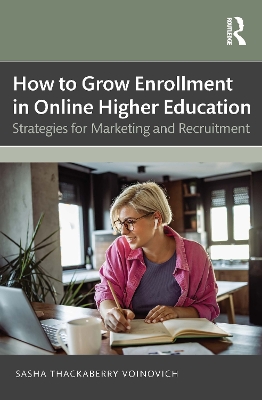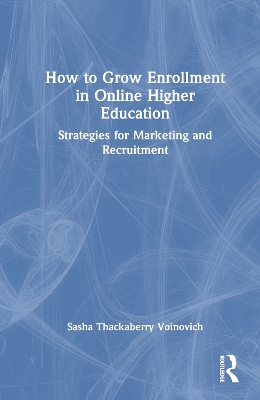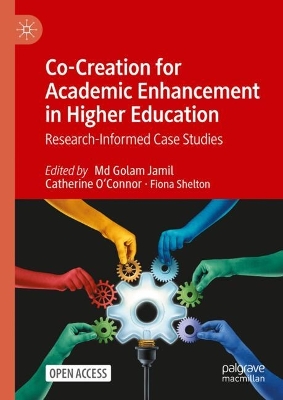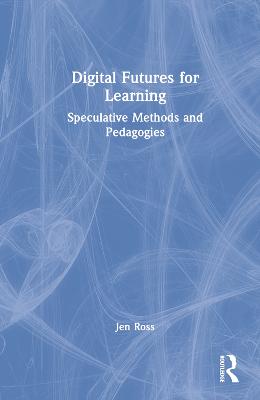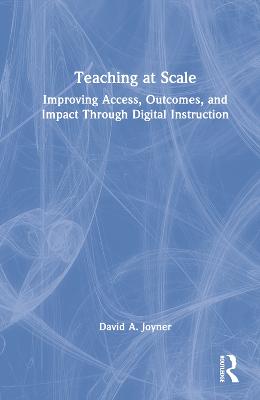Routledge International Handbook of Student-Centered Learning and Teaching in Higher Education
 portes grátis
portes grátis
Routledge International Handbook of Student-Centered Learning and Teaching in Higher Education
Klemencic, Manja; Hoidn, Sabine
Taylor & Francis Ltd
08/2022
664
Mole
Inglês
9780367497965
15 a 20 dias
1115
Descrição não disponível.
Introduction and Overview. Part 1: Student-Centered Learning and Teaching Theory. 1: Foundations of Student-Centered Learning and Teaching. 2. Philosophical Problems with Constructivism: Some Considerations for Student-Centered Learning and Teaching. 3: How Student-Centered Learning and Teaching Can Obscure the Importance of Knowledge in Educational Processes and Why it Matters. 4: Learning and Teaching in Harmony with the Brain: Insights from Neuroscience, Biology, Cognitive Science and Psychology. 5. Students as Actors and Agents in Student-Centered Higher Education. 6. Misconceptions and Misapplications of Student-Centered Approaches. Part 2: Student-Centered Learning Processes and Outcomes. 7. Promoting Engagement, Understanding and Critical Awareness: Tapping the Potential of Peer-to-Peer Student-Centered Learning Experiences in the Humanities and Beyond 8. Cautiously Independent: How Student-Centered Learning Encourages Emerging Adults to Take Risks. 9. Student-Centered Approaches to Fostering Media Literacy in College Students. 10. Enhancing Asian Students' Engagement by Incorporating Asian Intellectual and Pedagogical Resources in Teaching and Learning. 11. Transforming a Large University Physics Course to Student-Centered Learning, Without Sacrificing Content: A Case Study. 12: The Powerful Role of Testing in Student-Centered Learning and Teaching in Higher Education. Part 3: Student-Centered Classroom Practices. 13: ?Emerging Trends to Foster Student-Centered Learning in the Disciplines: Science, Engineering, Computing and Medicine. 14: Student-Centered Learning Through the Lens of Universal Design for Learning: Lessons from University and K-12 Classrooms. 15: Differentiated Instruction as a Student-Centered Teaching Practice in Teacher Education. 16: Person-Centered Theory and Practice: Small Versus Large Student-Centered Courses. 17: Student-Centered Learning: Investigating the Impact of Community-Based Transformational Learning Experiences on University Students. 18: Using Role-Play in Political Science Courses at a Japanese Women's University. Part 4: Student-Centered Spaces and Educational Technologies. 19: Active Learning Anywhere: A Principled-Based Approach to Designing Learning Spaces. 20: Student-Centered Virtual Design Studio Environments . 21: The Virtuous Circle of Learning Design and Learning Analytics to Develop Student-Centered Online Education. 22: Promoting Learning Goals in an Advanced Physics Laboratory via Student-Centered Learning: A Case Study Using the MITx Residential Platform. 23: Effectiveness of a Flipped Classroom Approach When Teaching Lab-Based Techniques. Part 5: Instructor and Student Support Services. 24: Partners in Creating Student-Centered Learning: Case Study of the Derek Bok Center for Teaching and Learning at Harvard University. 25: Student-Centered Learning and Teaching - Lessons from Academic Support. 26: Transitioning from Instructor-Centered to Student-Centered Learning: Case Study of the U.S. Air Force Technical Training Organizations. 27: Finding Our Way to More Student-Centered Teaching in Namibia: The Case of the Postgraduate Certificate in Higher Education. 28: Student-Centered Libraries: Changing Both Expectations and Results. Part 6: Student-Centered Institutional Strategies. 29: A Workshop as a Lever for Pedagogical Change? The Case of Active Learning: From Practice to Theory, and Back. 30: Building a Student-Centered Organizational Culture: Case Study of the Ateneo de Manila University. 31: The Connected Curriculum Framework: Case Study of University College London. 32: Implementing a University-Wide Evaluation System to Promote Student-Centered Learning. Part 7: Student-Centered Policies and Advocacy. 33: Bridging the Policy-Practice Gap: Student-Centered Learning from the Students' Perspectives. 34: Student-Centered Learning from a European Policy and Practice Perspective. 35: Student-Centered Philosophies and Policy Developments in Asian Higher Education. 36: What PISA Tells us About Student-Centered Teaching and Student Outcomes. Conclusion: Beyond Student-Centered Classrooms - A Comprehensive Approach to Student-Centered Learning and Teaching Through a Student-Centered Ecosystems Framework. Epilogue: Usable Knowledge - Policy and Practice Implications for Student-Centered Higher Education
Este título pertence ao(s) assunto(s) indicados(s). Para ver outros títulos clique no assunto desejado.
Sabine Hoidn;Manja Klemencic;Higher Education;Student-centred Learning;learning and teaching;international study;SCLI;Student centred-learning and instruction;active learning;policy and practice;SCLT;student-centered higher education;student-centered ecosystems;educational constructivism;Student Centered Teaching;Increased Learning Gains;Peer Assessment;Student Centered Teaching Practice;Student Centered Learning Processes;European University Association;Professional Development;Student Engagement;European Higher Education Area;Reflective Practice;Student Centered Teaching Approaches;European Higher Education Policies;Classroom Response Systems;Flipped Classroom Approach;Retrieval Practice;SCL Approach;SCL;European HEIs;SCLEs;Undergraduate Teaching Assistants;Growth Mindset;Asian Higher Education;European Higher Education;Education Systems;CBL
Introduction and Overview. Part 1: Student-Centered Learning and Teaching Theory. 1: Foundations of Student-Centered Learning and Teaching. 2. Philosophical Problems with Constructivism: Some Considerations for Student-Centered Learning and Teaching. 3: How Student-Centered Learning and Teaching Can Obscure the Importance of Knowledge in Educational Processes and Why it Matters. 4: Learning and Teaching in Harmony with the Brain: Insights from Neuroscience, Biology, Cognitive Science and Psychology. 5. Students as Actors and Agents in Student-Centered Higher Education. 6. Misconceptions and Misapplications of Student-Centered Approaches. Part 2: Student-Centered Learning Processes and Outcomes. 7. Promoting Engagement, Understanding and Critical Awareness: Tapping the Potential of Peer-to-Peer Student-Centered Learning Experiences in the Humanities and Beyond 8. Cautiously Independent: How Student-Centered Learning Encourages Emerging Adults to Take Risks. 9. Student-Centered Approaches to Fostering Media Literacy in College Students. 10. Enhancing Asian Students' Engagement by Incorporating Asian Intellectual and Pedagogical Resources in Teaching and Learning. 11. Transforming a Large University Physics Course to Student-Centered Learning, Without Sacrificing Content: A Case Study. 12: The Powerful Role of Testing in Student-Centered Learning and Teaching in Higher Education. Part 3: Student-Centered Classroom Practices. 13: ?Emerging Trends to Foster Student-Centered Learning in the Disciplines: Science, Engineering, Computing and Medicine. 14: Student-Centered Learning Through the Lens of Universal Design for Learning: Lessons from University and K-12 Classrooms. 15: Differentiated Instruction as a Student-Centered Teaching Practice in Teacher Education. 16: Person-Centered Theory and Practice: Small Versus Large Student-Centered Courses. 17: Student-Centered Learning: Investigating the Impact of Community-Based Transformational Learning Experiences on University Students. 18: Using Role-Play in Political Science Courses at a Japanese Women's University. Part 4: Student-Centered Spaces and Educational Technologies. 19: Active Learning Anywhere: A Principled-Based Approach to Designing Learning Spaces. 20: Student-Centered Virtual Design Studio Environments . 21: The Virtuous Circle of Learning Design and Learning Analytics to Develop Student-Centered Online Education. 22: Promoting Learning Goals in an Advanced Physics Laboratory via Student-Centered Learning: A Case Study Using the MITx Residential Platform. 23: Effectiveness of a Flipped Classroom Approach When Teaching Lab-Based Techniques. Part 5: Instructor and Student Support Services. 24: Partners in Creating Student-Centered Learning: Case Study of the Derek Bok Center for Teaching and Learning at Harvard University. 25: Student-Centered Learning and Teaching - Lessons from Academic Support. 26: Transitioning from Instructor-Centered to Student-Centered Learning: Case Study of the U.S. Air Force Technical Training Organizations. 27: Finding Our Way to More Student-Centered Teaching in Namibia: The Case of the Postgraduate Certificate in Higher Education. 28: Student-Centered Libraries: Changing Both Expectations and Results. Part 6: Student-Centered Institutional Strategies. 29: A Workshop as a Lever for Pedagogical Change? The Case of Active Learning: From Practice to Theory, and Back. 30: Building a Student-Centered Organizational Culture: Case Study of the Ateneo de Manila University. 31: The Connected Curriculum Framework: Case Study of University College London. 32: Implementing a University-Wide Evaluation System to Promote Student-Centered Learning. Part 7: Student-Centered Policies and Advocacy. 33: Bridging the Policy-Practice Gap: Student-Centered Learning from the Students' Perspectives. 34: Student-Centered Learning from a European Policy and Practice Perspective. 35: Student-Centered Philosophies and Policy Developments in Asian Higher Education. 36: What PISA Tells us About Student-Centered Teaching and Student Outcomes. Conclusion: Beyond Student-Centered Classrooms - A Comprehensive Approach to Student-Centered Learning and Teaching Through a Student-Centered Ecosystems Framework. Epilogue: Usable Knowledge - Policy and Practice Implications for Student-Centered Higher Education
Este título pertence ao(s) assunto(s) indicados(s). Para ver outros títulos clique no assunto desejado.
Sabine Hoidn;Manja Klemencic;Higher Education;Student-centred Learning;learning and teaching;international study;SCLI;Student centred-learning and instruction;active learning;policy and practice;SCLT;student-centered higher education;student-centered ecosystems;educational constructivism;Student Centered Teaching;Increased Learning Gains;Peer Assessment;Student Centered Teaching Practice;Student Centered Learning Processes;European University Association;Professional Development;Student Engagement;European Higher Education Area;Reflective Practice;Student Centered Teaching Approaches;European Higher Education Policies;Classroom Response Systems;Flipped Classroom Approach;Retrieval Practice;SCL Approach;SCL;European HEIs;SCLEs;Undergraduate Teaching Assistants;Growth Mindset;Asian Higher Education;European Higher Education;Education Systems;CBL

